Commodities Investing - Overview of Tradable Commodities Basic Facts
In this article about commodities investing you can find an overview of all tradable commodities and their basic facts.
Following you can read basic information about all tradable commodities on the commodities market. They are grouped in the following categories:
- Energy Commodities: Carbon Emission, Crude Oil Brent, Crude Oil West Texas, Electricity, Gasoline, Heating Oil, Natural Gas;
- Industrial Metals: Aluminium, Copper, Nickel, Palladium, Platinum, Zinc;
- Precious Metals: Gold, Silver;
- Agriculture: Cocoa Bulk Bean, Cocoa Flavour Bean, Coffee Arabica, Coffee Robusta, Corn, Cotton, Lean Hogs, Lumber, Milk, Oats, Orange Juice, Pork Bellies, Rough Rice, Soybean, Soybean Meal, Soybean Oil, Sugar Raw, Sugar White, Wheat, Wool;
- Live Stock: Cattle Feeder, Cattle Live;
Energy
Carbon Emissions (Ce)
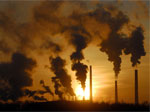
Carbon emissions credits are allowances awarded to businesses by governments in the European Union. They dictate how much carbon dioxide a business can emit in one year. These credits can be bought and sold by businesses and traders. Each unit traded is equivalent to the right to produce one tone of carbon dioxide equivalent gas.
Aviation produces 2% of all human-induced carbon dioxide emissions and is responsible for 12% of CO2 emissions from the transport sector. 74% comes from road transport.
Carbon credits enable users to produce more than their allowed quota o emissions. Approximate production is 30 billion metric tonnes per year and among top producing countries are: China 22%, U.S. 20%, EU 14%, India 5.5%.
To The Top Of Commodities Investing
Crude Oil Brent (Ob)
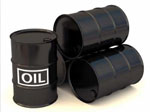
Crude oil is the single most actively traded commodity and is a favorite of speculative and fund investors. Crude oil is a naturally occurring, toxic, highly flammable liquid, mostly discovered through drilling. The oil is then pumped from underground wells. The Brent type of oil is lighter or 'sweet' crude oil, and is typically refined in Northwest Europe.
The term Brent originally came from the name of the Shell company's oil field, which in turn got its name from a local bird, the Brent goose.
Brent oil is used as gasoline, diesel fuel, asphalt, heating oil, detergent, bubble gum, tyres, dishwashing liquid, and deodorants. Approximate production is 1.2 million barrels per day and among top producing countries are: Saudi Arabia, Russia, U.S. and Iran.
To The Top Of Commodities Investing
Crude Oil West Texas (Ot)
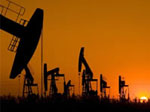
West Texas crude oil comes from the United States Midwest and the Gulf of Mexico. It is lighter than Brent crude oil and will generally, but not always, be priced slightly higher due to its higher quality.
West Texas supply is reliant on pipeline infrastructure logistics in the U.S. This can cause bottlenecks and limit supply to areas that require it in the short term.
West Texas oil is used as gasoline, diesel fuel, asphalt, heating oil, detergent, bubble gum, tyres, and ink. Approximate production is 5.3 million barrels per day and among top producing countries are Midwest and the Gulf of Mexico.
To The Top Of Commodities Investing
Electricity (El)

Electricity is usually generated at a power station, primarily fuelled by burning fossil fuels, nuclear fission, flowing water, wind, or geothermal power. Electricity must be used when it is generated and cannot be stored to any significant degree. The power industry has been deregulated to some extent in the past decade and now major utility companies sell power back and forth in order to meet supply and demand needs.
The incandescent light bulb we use today was invented in 1800.
Electricity is used for lightning, refrigeration, air conditioning, telecommunications, and fuel for public transportation. Approximate production is 1.8 trillion kWh per month and among top producing countries are U.S., China, Japan and Russia.
To The Top Of Commodities Investing
Gasoline (Ga)

Gasoline or petrol is a petroleum-derived liquid mixture, which is mainly used as fuel in internal combustion engines. The most economical way of making gasoline is with crude oil, with refineries turning more than half of every barrel of crude into gasoline.
Most gasoline sold at the pump has at least 5% ethanol added to help make it less damaging to the environment.
Gasoline is used as fuel. Approximate production is 8.7 million barrels per day and among top producing countries are U.S., Saudi Arabia, Mexico, and Venezuela.
To The Top Of Commodities Investing
Heating Oil (Ho)

Heating oil is a heavy fuel oil that is derived from crude oil. Heating oil is commonly used as fuel for furnaces and boilers in buildings, resulting in a higher demand during the winter months, from October through March, with a drop off during the summer months.
Heating oil produces the hottest flame of any home heating fuel and it provides the cleanest combustion.
Heating oil is used for heating. Approximate production is 3.5 million barrels per day (U.S.) and among top producing countries are Russia, Saudi Arabia, U.S. and Iran.
To The Top Of Commodities Investing
Natural Gas (Ng)

Natural gas is a fossil fuel that is colorless, shapeless and odorless in its purest form. Natural gas is a very clean fuel - per unit of energy, its combustion produces 30% less carbon dioxide than oil and about 45% less carbon dioxide than coal. Before natural gas can b e used as a fuel it must undergo extensive processing to remove almost all materials other then methane.
Britain became the first country to commercially use natural gas produced from coal for streetlights and indoor lights.
Natural gas is used for electricity, heating, and cooling. Approximate production is 5.5 million terajoules per year and among top producing countries are Russia, U.S., Canada and Iran.
To The Top Of Commodities Investing
Industrial Metals
Aluminium (Al)

Aluminium is a silvery, lightweight metal. In 1886 the first practical method for producing aluminum through electrolytic reduction was discovered, and it is still the primary method used today to produce Aluminium. Aluminium weights less than a third as much as steel and it's high strength-to-weight ration makes it a good choice as a construction material. Aluminium is also a great conductor of electricity; it carries nearly twice as much electricity per kilogram as cooper. It is also 100% recyclable.
Aluminium is the third most abundant element on Earth (8% by weght). In the late 1800s it was more valuable than gold.
Aluminium is mainly used in aircrafts, automobiles, soft drink cans, cooking utensils, and boat hulls. Approximate production is 36.9 million metric tons per year and among top producing countries are: China 35%, Russia 9%, Canada 8%, U.S. 5%.
To The Top Of Commodities Investing
Copper (Cu)

Copper has been in use for thousands of years and is widely used because it is ductile, an excellent conductor of electricity, and has strong corrosion and bacteria resistance properties. It is often mixed with zinc or tin to produce stronger alloys, such as brass and bronze. Electrical uses account for two thirds of total copper usage, and building construction is the single largest market.
Bacteria will not grow on copper surfaces, so it is used in plumbing, food processing and household products.
Cooper is used for alloys of brass and bronze, electronic and electrical equipment, air-conditioning systems, food processing surfaces. Approximate production is 15.8 million metric tons per year and among top producing countries are: Chile 34%, U.S. 8%, Peru 8%, China 6%.
To The Top Of Commodities Investing
Nickel (Ni)

Nickel is a hard, malleable, ductile metal that has a silvery tinge that can take on a high polish. The use of nickel dates back as far as 3500 BC. Nickel readily combines with other metals to form alloys, especially iron, cobalt and cooper. Nickel alloys are used in electronics, coinage and marine engineering. There are about 3000 nickel-containing alloys in everyday use today. About 90% of all new nickel sold each year goes into alloys, with around two-thirds going into stainless steel.
Nickel is the fifth most common element that makes up the earth and it's found in most meteorites.
Nickel is used as stainless steel and other corrosion-resistant alloys, coins, rechargeable batteries, electronic circuitry, and helicopter rotors. Approximate production is 1.4 million metric tons per year and among top producing countries are: Russia 19%, Canada 13%, Indonesia 13%, Australia 12%.
To The Top Of Commodities Investing
Palladium (Pd)

Palladium is very similar to platinum and is part of the same general metal group. Palladium is mined with platinum, but it is slightly more common because it is also a by-product of nickel mining. Palladium is resistant to chemical attack, has excellent high-temperature characteristics and stable electrical properties.
Over half of the supply of palladium goes into catalytic converters, which convert harmful gases from auto exhaust into less harmful substances.
Palladium is used as automotive catalyst, electronic equipment, dental alloys, and jewellery. Approximate production is 195,000 kilograms per year and among top producing countries are: Russia 41%, South Africa 40%, U.S. 6%, Canada 5%.
To The Top Of Commodities Investing
Platinum (Pt)

Platinum is a relatively rare, chemically inert, metallic element that is more valuable than gold. It has a high fusing point, is malleable and ductile, and has high electrical resistance. Chemically, it's relatively inert and resists attack by air, water, single acids, and ordinary reagents.
Platinum is one of the rarest metals on the planet and it's also one of the most expensive.
Platinum is used in jewellery, as auto catalyst, fibre-optic cables, infra-red detectors, fertilizers, explosives, dental restorations, anti-cancer drugs. Approximate production is 178,000 kilograms per year and among top producing countries are: South Africa 79%, Russia 11%, Canada 3%, U.S. 2%.
To The Top Of Commodities Investing
Zinc (Z)

Zinc is a bullish-while metallic element which is never found in its pure state but rather as zinc oxide, zinc silicate, zinc carbonate, zinc sulphide, and in certain minerals. There are a number of substitutes for Zinc in chemicals, electronics, and pigments.
Not only is Zinc an important element in industry, it's also an essential mineral for humans.
Zinc is mainly used as protective coating for other metals, such as iron and steel. The process of applying this coating is called galvanizing. Zinc is also used for flat batteries, construction, washing machines, hair dryers, and high tension electrical towers. Approximate production is 11.1 million metric tons per year and among top producing countries are: China 25%, Australia 12%, Canada 7%, U.S. 6%.
To The Top Of Commodities Investing
Precious Metals
Gold (Au)

Gold has always held a special place in human history as an investment and a store of value, and it is the commodity that has been the closest to being used as pure money. To this day people turn to gold as the one form of investment that can withstand crises like wars and economic downturns. Gold is precious metal that's unaffected by air, moisture, heat, and most solvents. It has been coveted for centuries thanks to its unique blend of rarity, beauty, and chemical characteristics.
Pure gold is one of the most malleable and ductile of all metals and is virtually indestructible.
Gold is used in jewellery, art, electronics, dental, coins and monetary exchanges. Approximate production is 2.4 million kilograms per year and among top producing countries are: China 13%, South Africa 9%, U.S. 9%, and Australia 9%.
To The Top Of Commodities Investing
Silver (Ag)

Silver is a very ductile, malleable metal that has the highest thermal conductivity of any metal. Silver assumed a key role in the U.S. monetary system in 1792, when the Congress chose to support all U.S. currency with silver and gold assets. In 1965 the U.S. discontinued the use of silver coinage. Mexico is now the only country that still uses silver coins.
Silver has the highest electrical conductivity of any element and the highest thermal conductivity of any metal.
Silver is used in photography, electrical appliances, conductors, mirrors, glass and as an antibacterial agent for the health industry. Approximate production is 21,400 metric tons per year and among top producing countries are: Peru 19%, China 14%, Mexico 12%, and Chile 9%.
To The Top Of Commodities Investing
Agriculture
Cocoa Bulk Bean (Cb)
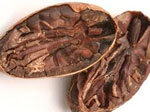
Cocoa is the common name for a powder derived from the fruit seeds of the cacao tree. It's a delicate plant that will only thrive in tropical rain forest-type conditions and only within some 20 degrees on either side of the equator. Demand mostly comes from developed nations, particularly Europe and the U.S., with big chocolate companies being the largest buyers.
The scientific name for cocoa, theobroma, can be translated to mean 'food of gods'.
Cocoa is used for chocolate, cocoa powder, and cocoa butter. Approximate production is 4.3 million metric tons per year and among top producing countries are: Ivory Coast 32%, Indonesia 18%, Ghana 16%, Nigeria 12%.
To The Top Of Commodities Investing
Cocoa Flavour Bean (Cf)

Today, West Africa produces the largest amount of cocoa beans, while Latin America generates beans that are known for their unique taste and quality. Ecuador, Colombia, Caribbean countries and Indonesia grow the flavour beans that come from Criollo and Trinitario cacao trees. In the early 20th century, vlavour beans accounted for nearly half of all cacao beans. Now they account for less than 5%.
Cocoa flavour bean is the world's smallest soft commodity market.
Cocoa flavour bean is used for premium chocolate and cocoa powder. Approximate production is less than 5% of the total cocoa bean production and among top producing countries are: Ecuador, Columbia, Indonesia and Caribbean countries.
To The Top Of Commodities Investing
Coffee Arabica (Ca)

Coffee is the common name for any type of tree in the genus madder family. Coffee is generally classified into two types of beans: Robusta and Arabica. Arabica makes up about 70% of total production and its flavour is considered by many to be far superior to Robusta. Arabica trees are typically grown at high elevations where insects and diseases are less prevalent. This restricts mechanical harvesting, so Arabica is nearly always picked by hand.
The coffee plant will produce its first full crop of beans at about 5 years old. It will remain productive for around 15 years.
Coffee Arabica is used for hot and cold beverages. Approximate coffee production (Arabica and Robusta) is 130 million 60-kilogram bags per year and among top producing countries are: Brazil 35%, Vietnam 14%, Colombia 7%, and Indonesia 7%.
To The Top Of Commodities Investing
Coffee Robusta (Cr)
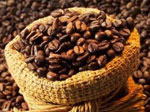
Robusta makes up about 30% of total production. Its flavour is considered inferior to Arabica and it's quite often used as a filler in lower grade coffee blends. What it lacks in flavour it makes up for in caffeine content, containing almost twice as much as Arabica.
Around 75% of all coffee is exported. Only Ethiopia and Brazil enjoy high domestic consumption.
Coffee Robusta is used for hot and cold beverages. Approximate coffee production (Arabica and Robusta) is 130 million 60-kilogram bags per year and among top producing countries are: Brazil 35%, Vietnam 14%, Colombia 7%, and Indonesia 7%.
To The Top Of Commodities Investing
Corn (Cn)

Corn is a member of the grass family of plants and is a native grain of the Americas. It is a hardy plant that grows in many different parts of the world. This golden grain not only makes god tortilias, but is also as essential food for farmed animals, and since the green revolution started it has become a major raw material for biofuel production.
Corn is produced on every continent in the world except Antarctica.
Corn is used for live stock feed, ethanol production, adhesives plastics, and food in the form of cornstarch, oil, cornmeal, syrup and alcohol. Approximate production is 796 million metric tons per year and among top producing countries are: U.S. 42%, China 19%, EU 6%, Brazil 6%.
To The Top Of Commodities Investing
Cotton (C)

Cotton is natural vegetable fibre that comes from small trees and shrubs of a genus belonging to the mallow family. Cotton requires a long growing season, plenty of sunshine and water during the growing season, and then dry weather for harvesting. The weight of cotton is measured in terms of 'bales' - a bale is deemed to equal 480 pounds in weight. The value of cotton is determined according to the staple, grade and character of each bale.
Cotton was one of the earliest crops grown by European settlers in the US and it's now one of the nation's principal agricultural exports.
Cotton is used for clothing, home furnishing, and medical products. Approximate production is 100 million 480-pound bales per year and among top producing countries are: China 31%, India 23%, U.S. 12%, Pakistan 10%.
To The Top Of Commodities Investing
Lean Hogs (Lh)
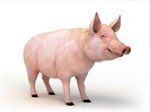
Swine were among the first of all animals to be domesticated, around 6,000 year ago. The Chinese were the first to raise wild pigs for food. Hogs are generally bred twice a year in a continuous cycle that has been designed to provide a steady flow of production.
Insulin, along with about 40 other medicines and pharmaceuticals, are derived from pigs.
Lean Hogs are used as the lean meat yields ham, loin, belly, spareribs, Boston butt roast, blade steakes, picnic, and miscellaneous cuts and trimmings. Approximate production is 802 million heads and among top producing countries are: China 48%, EU 22%, and U.S. 10%.
To The Top Of Commodities Investing
Lumber (Lb)

Humans have been using lumber for construction for thousands of years, but due to the heaviness of timber and the manual methods of harvesting, large-scale lumbering didn't really get started in earnest until the mechanical advances of the Industrial Revolution occurred. Lumber is produced from both hardwood and softwood. Hardwood lumber comes from deciduous trees that have broad leaves.
Homebuilding and remodeling account for two thirds of U.S. lumber consumption.
Lumber is used for wood pallets, gum, maple, paper, and cardboard. Approximate production is 908 million cubic meters per year and among top producing countries are: U.S., Russia, Canada, and Scandinavian countries.
To The Top Of Commodities Investing
Milk (Mk)

Humans drink the milk produced by a variety of animals, including cows, goats, sheep, camels, reindeer, buffaloes, and llamas. The vast majority of milk used for commercial production comes from cows. Raw milk is processed by spinning it in a centrifuge, homogenizing it to create a consistent texture, and then sterilizing it through pasteurization.
In India, half of all milk consumed comes from the water buffalo.
Milk is used as beverages, organic fungicide and foliage fertilizer. Approximate production is 438 billion metric tons per year and among top producing countries are: EU 31%, U.S. 20%, India 11%.
To The Top Of Commodities Investing
Oats (Oa)

Oats are the seeds or grains of a genus of plants that thrives in cool, moist climates. There are about 25 species of oats that grow in the cooler temperate regions, worldwide. Oats are usually sown in early spring and harvested in mid-to-late summer, but in the southern regions of the northern hemisphere they may be sown in the fall.
The oldest known cultivated oats were found inside caves in Switzerland and are believed to be from the Bronze Age.
Oats is used in many processed foods, such as flour. It is also used as livestock feed and also used after fermentation as a chemical solvent in various refining industries. Approximate production is 23.9 million metric tons per year and among top producing countries are: EU 33%, Russia 22%, Canada 16%, and U.S. 5%.
To The Top Of Commodities Investing
Orange Juice (Oa)
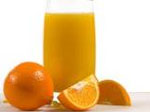
Two to four medium-sized oranges produce about 1 cup of juice. Modern mechanical extractors can extract juice from 400 to 700 oranges per minute.
Orange juice is used as juice, marmalade, liqueurs such as Triple Sec and Curacao, cattle feed. Approximate production is 52.1 million metric tons per year and among top producing countries are: Brazil 34%, U.S. 14%, Mexico 7%.
To The Top Of Commodities Investing
Pork Bellies (Pb)
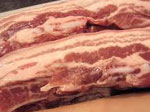
Pork bellies are a cut of meat from a hog from which bacon is produced. Bellies account for about 12% of a hog's live weight, but represent a larger 14% of the total cut-out value of the realized pork products. There are definite seasonal patterns in pork belly prices. Bellies are storable and the movement into cold storage builds early in the year, peaking about mid-year.
Pork bellies make up about 14% of the lean meat of a hog and can be frozen and stored for up to a year before they are processed.
Pork bellies are used as bacon. Approximate production is 44.6 million pounds in storage per year and among top producing countries are: China 48%, EU 22%, and U.S. 10%.
To The Top Of Commodities Investing
Rough Rice (Rr)
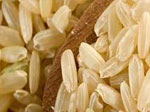
Rice is a grain that is cultivated on every continent except Antarctica and it is the primary food for half the people in the world. Rice is grown at varying altitudes (from sea level to about 3,000 meters), in varying climates (tropical to temperate), and on dry flooded land. The growth variation of rice plants is 3-6 months. Rice is harvested by hand in developing countries or by combines in industrialized countries.
Rice is the most important grain with regards to human nutrition, providing more than on fifth of the calories consumed worldwide.
Rice is used as food, for paper, building board, bedding, fuels. It can also be used for filtration or in charcoal briquettes. Approximate production is 650 million metric tons per year and among top producing countries are: China 30%, India 19%, Indonesia 9%, Bangladesh 7%.
To The Top Of Commodities Investing
Soybean (S)

Soybeans were a crucial crop in eastern Asia long before written records began. Soybean seeds contain 20% oil, 40% protein, 35% carbohydrate, and 5% ash. This makes them a source of complete protein. About 90% of soybeans grown in the U.S. are genetically modified. On commodity futures markets soybeans are on of the most active agricultural commodities traded.
Soybeans can produce at least twice as much protein per acre as any other major vegetable or grain crop and up to 15 times more protein per acre than land set aside for meat production.
Soybeans are used for soy sauce, soy flour, soy milk, tofu, livestock feed and textured vegetable protein, which is used to imitate meat. Approximate production is 255 million metric tons per year and among top producing countries are: U.S. 36%, Brazil 26%, Argentina 21%, China 6%.
To The Top Of Commodities Investing
Soybean Meal (Sm)
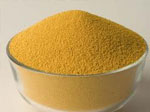
Soybean meal is produced by processing and separating soybeans into oil and meal components. Chickens, cattle, turkey, and pigs grown in the U.S. consume about 25 million tonnes of soybean meal each year, by far surpassing the consumption of any other high-protein animal feed.
The bulk of soybean meal is used as a filler and source of protein in animal diets, including pig, chicken, cattle, horse, sheep and fish feed.
Soybeans meal is used as animal feed for livestock, poultry, pets and aquaculture. Approximate production is 160.5 million metric tons per year and among top producing countries are: U.S. 23%, China 22%, Brazil 15%, and EU 6%.
To The Top Of Commodities Investing
Soybean Oil (So)
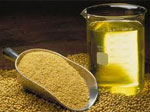
Around the world, soybean oil is the most widely used oil in cooking and it's commonly referred to as vegetable oil. Each bushel of soybeans produces 11 pounds of soybean oil and 48 pounds of soybean meal. Demand for the oil is closely linked to the demand for other vegetable oils, particularly those that can be used to produce biofuels. When prices for these oils rise, soybean oil prices also trail higher.
The oil content of soybeans correlates directly with the temperatures and the amount of sunshine prevalent during the soybean pod-filling stages.
Soybeans oil is used for edible oil, biodiesel, plastics, resins, varnish, ink, crayons and paints. Approximate production is 37.7 million metric tons per year and among top producing countries are: U.S. 23%, Brazil 16%, and EU 6%.
To The Top Of Commodities Investing
Sugar Raw (Sr)
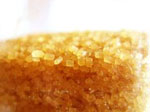
Raw sugar is produced by pressing the roots of the sugar beet or the stem of the sugar cane. The subsequent juice is then mixed with lime to achieve a desired pH balance and to remove any impurities. The resulting liquid is evaporated and then centrifuged to isolate the sugar crystals which, when dried, form the more familiar granule shapes we all know. The brown color of raw sugar is due to the presence of molasses.
Sugar was not plentiful or cheap in early times - honey was more often used as a sweetener in most parts of the world.
Raw sugar is used in cooking and for ethanol (biofuels). Approximate production is 153.5 million metric tons per year and among top producing countries are: Brazil 23%, India 11%, China 8%, Thailand 5%.
To The Top Of Commodities Investing
Sugar White (Sw)
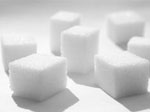
White sugar is a more refined version of raw sugar and is the result of sulphur dioxide being introduced to the sugar cane juice before evaporation.
White sugar is used for cooking. Approximate production is 153.5 million metric tons per year and among top producing countries are: Brazil 23%, India 11%, China 8%, Thailand 5%.
To The Top Of Commodities Investing
Wheat (Wt)

Wheat is a cultivated wild grass, and has been grown as a crop in the Nile Valley since 5,000 BC. There are many different varieties of wheat grown in the U.S.; however, Red Winter wheat is most common. This wheat is planted in the winter months and harvested in May. Fertilizers, herbicides, fungicides, and growth regulators are typically applied at specific stages or plant development.
Globally, wheat is the leading source of vegetable protein in human food, having a higher protein content than either corn or rice.
Wheat is used for flour, brewing, distilling, oil, gluten, straw for livestock bedding, livestock feed, hay or silage, newsprint, and other products. Approximate production is 680.1 million metric tons per year and among top producing countries are: EU 20%, China 17%, India 12%, U.S. 9%.
To The Top Of Commodities Investing
Wool (W)

Woll is light, warm, resistant to fire and it absorbs moisture. Sheep are sheared once a year and produce about 4.3 kilograms of 'greasy' wool per year. Greasy wool is wool that has not been washed or cleaned. Wool fineness is determined by fibre diameter. Fine wool is softer, lighter, and produces fine clothing. Merino sheep produce the fines wool.
Wool is actually resistant to fire and if it is burned it forms char, which is insulating and self-extinguishing.
Wool is used for clothing, insulation in houses, carpets, furnishing, and bedding. Approximate production is 2.2 million metric tons per year and among top producing countries are: Australia 21%, China 18%, and New Zealand 10%.
To The Top Of Commodities Investing
Live Stock
Cattle Feeder (Cf)
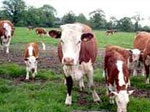
There are two types of cattle-based products traded: live cattle and feeder cattle. Feeder cattle refers to the younger cattle that is placed in the feedlot once they reach 650-850 pounds in weight. At this stage they are fed a special diet to encourage rapid weight gain to push their individual weight up to about 1,250 pounds. The food mix consists of grains, protein, supplements, and roughage, including: corn, wheat, soybean, cottonseed, alfalfa and silage.
The gestation period for cattle is about nine months.
Cattle feeder is usually kept on the feedlot until a weight of 800 pounds is reached, then feeder cattle become live cattle. Approximate production is 30.4 million head per year and among top producing countries are: India 28%, Brazil 18.5%, China 10.5%, U.S. 9.3%.
To The Top Of Commodities Investing
Cattle Live (Cl)
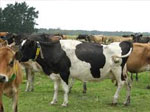
Live cattle refers to cows that have reached the final requisite weight of 900 to 1,250 pounds. Cows have four stomachs and can graze for up to eight hours a day, taking in about 45 kilos of feed and a bathtub full of water. But all the resulting wind and manure produces so much methane, a gas that warms the world 20 times faster than carbon dioxide, that cows are a major contributor to the damage to the ozone layer. They are on a par with motor cars.
Production of beef in the US utilizes more land and creates more market value than the production of any other livestock or grain crop.
Cattle live is used for human consumption. It is used to produce beef, soap, leather, animal feed and even camera film. Approximate production is 1 billion head worldwide and among top producing countries are: India 28%, Brazil 18.5%, China 10.5%, U.S. 9.3%.
To The Top Of Commodities Investing
This article is a summary based on CMC Markets.
Written by: Goran Dolenc
Do you find this content useful? Like! Tweet! Recommend! Share!
Back from Commodities Investing to Commodities Market
Back from Commodities Investing to Best Online Trading Site for Beginners home page







